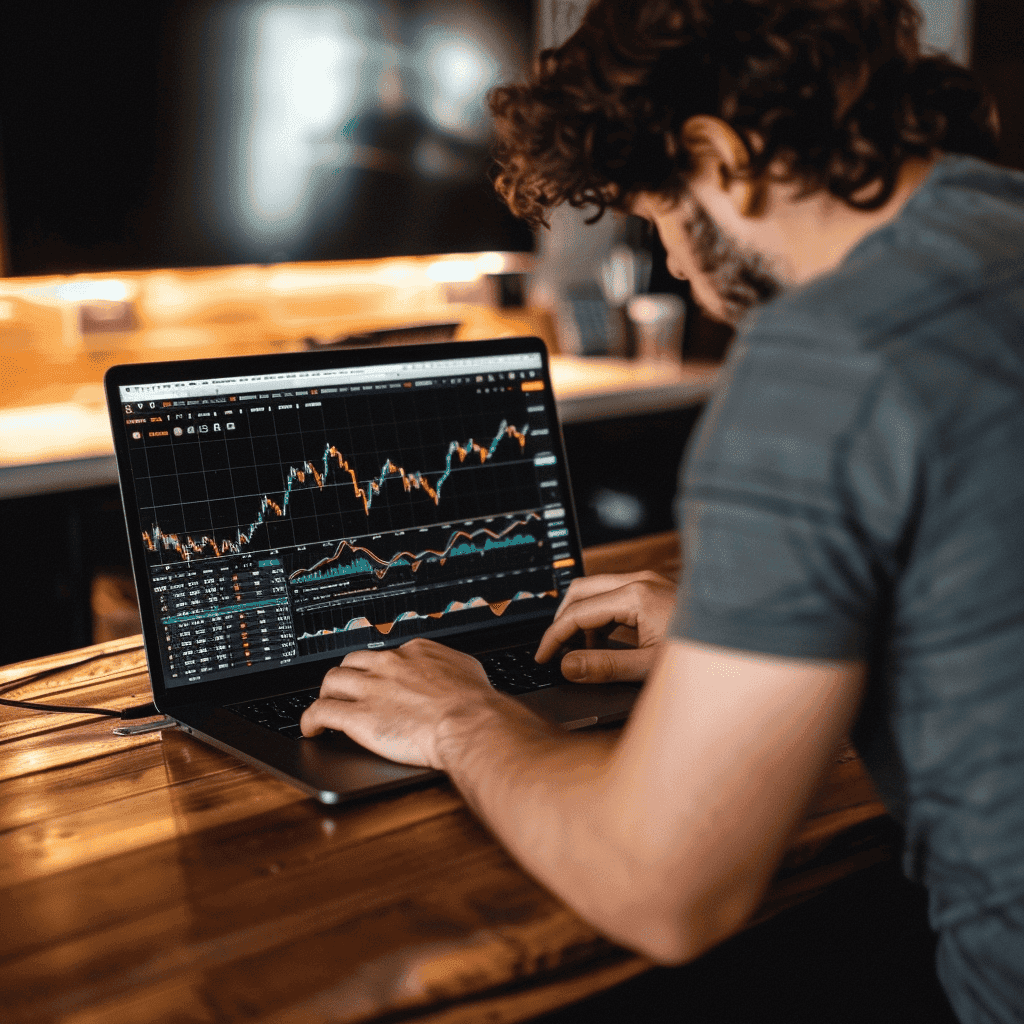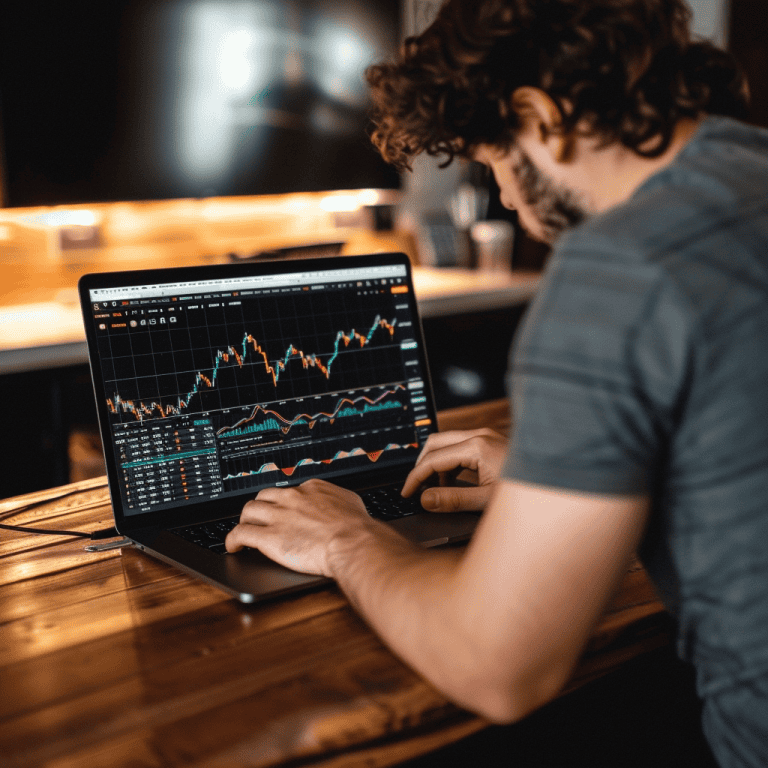
Forex Slippage Explained: Avoiding Unwanted Trades
Ever found yourself in a trade where the execution price wasn’t quite what you expected? That’s slippage for you, a […]

Ever found yourself in a trade where the execution price wasn’t quite what you expected? That’s slippage for you, a common yet often misunderstood element of Forex trading. It can sneak up on you, turning a well-planned strategy upside down.
In this article, I’ll demystify Forex trading slippage, revealing what it really is and why it happens. More importantly, I’ll share some insider tips on how to minimize its impact on your trades. Whether you’re a seasoned trader or just starting out, understanding slippage is crucial for your trading toolkit.
Table of Contents
What is Forex Trading Slippage?
In the dynamic world of Forex trading, slippage is an inevitable aspect that traders like me come up against. It occurs when there’s a difference between the price at which I intend to execute a trade and the price at which the trade is actually executed. This discrepancy can be a few pips or a significant stretch, depending on market conditions and the volatility at the time of the trade.
High Impact Events such as economic reports and geopolitical shifts often lead to market volatility, which in turn increases the likelihood of slippage. The Forex market operates around the clock, witnessing heavy trade activity and news-driven price movements. When key events take the markets by storm, traders scramble to enter or exit positions, leading to price gaps. These gaps are where slippage sneaks in.
Moreover, the type of order I place affects my exposure to slippage. There are primarily two types of orders:
-
Market Orders: These are executed at the best available price at the time of execution. During periods of high volatility, the best available price can be significantly different from the expected price.
-
Limit Orders: I use these to specify the maximum or minimum price at which I am willing to buy or sell. Limit orders can prevent slippage, but they come with the risk of not being executed if the market price doesn’t hit the limit price.
To illustrate, here’s a real-world example from my trading experience. I once placed a market order to buy EUR/USD at 1.1800, expecting quick execution. However, due to a sudden news release, the next available price was 1.1815, resulting in 15 pips of slippage.
Understanding that slippage can be both negative and positive is crucial. Positive slippage happens when the executed price is better than the expected price, which can sometimes work in my favor. However, it’s more common to hear traders discuss negative slippage, which eats into potential profits and can lead to larger losses than anticipated.
The key takeaway here is that slippage is a normal part of Forex trading. It’s something I’ve learned to anticipate and incorporate into my trading strategy to mitigate its impact as much as possible.
Understanding the Causes of Slippage
The inner workings of the Forex market are complex, but by dissecting the fundamental causes of slippage, traders can be better prepared to navigate this common occurrence. Market liquidity plays a pivotal role in slippage. When a market is liquid, there’s a high volume of trading and thus a better chance for orders to be executed at desired prices. Conversely, in a thin or less liquid market, the scarcity of buyers and sellers can lead to larger discrepancies between the expected and actual execution prices.
Another key factor that can trigger slippage is timing. Trades executed during off-peak hours may encounter less liquidity, increasing the likelihood of slippage. Additionally, the release of economic reports, news events, or any market-moving information can cause rapid changes in price. These can create gaps in the market where slippage is more prevalent.
I’ve observed that particular types of orders also influence the risk of slippage. Market orders, while convenient for their immediate execution, are high risk for slippage due to their nature of transacting at the best available current price rather than a specified rate. In contrast, limit orders provide a cap on the execution price, which can reduce the chances of experiencing undesirable slippage.
To illustrate, here’s a quick comparison of how order types fare in a volatile market:
|
Order Type |
Slippage Likelihood |
Market Condition Impact |
|---|---|---|
|
Market Order |
High |
Sensitive to quick price changes |
|
Limit Order |
Lower* |
Offers some price protection |
*Note: Limit orders may not execute if the price does not reach the specified limit.
It’s crucial to consider not just the type but the timing of the order. For instance, during the Non-Farm Payroll report in the US, even limit orders might struggle to execute due to the extreme market moves. Identifying such events and adjusting the trading approach accordingly helps mitigate the risks associated with slippage.
Through a combination of strategic planning and an understanding of market dynamics, I’ve developed strategies to minimize slippage without forgoing potential trading opportunities. These involve carefully selecting order types and execution times, as well as staying attuned to economic calendars.
Impact of Slippage on Forex Trades
Understanding the impact of slippage on Forex trades is crucial to managing your trading strategy effectively. Slippage can affect profitability and, when not accounted for, can lead to unexpected losses. Negative slippage occurs when a trade is executed at a worse price than intended, often during fast-moving markets or periods of low liquidity. Conversely, positive slippage happens when orders are executed at a better price than expected. Though less common, it’s a welcome occurrence for traders.
Here’s what I’ve learned through firsthand experience: slippage can influence the outcome of trading strategies. Particularly for short-term and high-frequency trading methods, where profit margins can be slim, slippage can turn a potential win into a loss. For long-term traders, while single instances of slippage might not drastically affect overall profitability, cumulative slippage over time can significantly erode profits.
Monitoring the markets closely, especially during major economic announcements or other high-impact events, can help in anticipating slippage. Let’s break down how it can affect different trading strategies:
-
Scalping: Small price changes are the lifeblood of this strategy, so slippage can wipe out potential profits quickly.
-
Day Trading: Traders might experience both negative and positive slippage but must keep a tight reign to prevent erosion of gains.
-
Swing Trading: Exposure to overnight events can lead to unexpected slippage, affecting entry and exit points.
To illustrate, here’s an example: say I place a large EUR/USD buy order during a non-farm payroll announcement, I might expect some slippage. However, if the market moves rapidly and fills my order 5 pips worse than expected, that’s an immediate unrealized loss that impacts my trading outcome.
Risk Management plays an integral role in handling slippage. By using stop loss and take profit orders strategically, you can set limits on potential slippage and better control the execution price range of your trades. While it’s impossible to eliminate slippage entirely, understanding its effects and preparing for it can reduce its impact on your Forex trading journey.
Strategies to Avoid Slippage in Forex Trading
Knowing that slippage can eat into my profits, I’ve developed several strategies over the years to minimize its occurrence. The key to managing slippage is to understand not only the market conditions but also the tools at one’s disposal.
Trade During Peak Hours: Typically, the forex market experiences the highest volume of trades during peak market hours when the major markets overlap. I’ve found that trading during these periods ensures better liquidity and thus reduces the probability of slippage.
Limit Orders Over Market Orders: When I place a limit order, I’m specifying the worst price I’m willing to accept. This can prevent slippage from occurring, as my trade will only be executed at my specified price or better. On the flip side, market orders can be risky during volatile periods as they are filled at the next available price, which could be quite different from the expected price.
Gradual Position Entry: I avoid opening a large position all at once. Instead, I enter the market gradually, which not only spreads the risk but can also reduce slippage, especially in a less liquid market or for larger orders.
Setting a ‘Slippage Tolerance’: Some trading platforms offer the option to set a slippage tolerance, representing the maximum slippage I’m willing to accept. If the expected slippage exceeds this threshold, the trade simply won’t execute.
Algorithmic Trading: For traders like me who are comfortable with technology, algorithmic trading programs can be fine-tuned to account for slippage and to only execute trades when certain market conditions are met.
By adopting these strategies, I’ve significantly cut down on unexpected slippage. However, it’s also important to remember that completely avoiding slippage is impossible, as it’s a natural part of trading in the forex market. Rather than aiming for an unrealistic goal of zero slippage, it’s about learning to control and manage it effectively.
Importance of Setting Realistic Expectations
Setting realistic expectations in Forex trading is essential for several reasons. First, it helps you maintain a rational mindset during the ups and downs of market fluctuations. It’s easy to get caught up in the excitement of potential gains, which can blind you to the reality of slippage and other market risks.
Knowing that slippage can and will happen is a crucial part of setting these expectations. While it’s a common occurrence, many new traders enter the market with the misconception that trades will always execute at the anticipated prices. This expectation leads to frustration and can result in poor decision-making when the outcomes don’t match up with their expectations.
To manage your expectations effectively, it’s important to build your trading strategy on historical data and market analysis. Understanding past market behaviors during different conditions can give you a better sense of what to expect, including how slippage might affect your trades.
Another key component of setting realistic expectations is acknowledging the limitations of your trading capital. Recognize the potential financial impact of slippage on your portfolio, and always ensure that you’re not overexposed on a single trade. By doing so, you’re not only preparing for the risks of slippage but also implementing sound risk management practices.
Lastly, always remember that no single strategy is foolproof. Slippage is just one of the many factors that can affect your trading performance. Therefore, it’s wise to diversify your approaches and adjust your expectations based on the changing dynamics of the Forex market. By staying flexible and informed, you’re in a better position to handle the unexpected and protect your investments from the vagaries of the market.
Incorporating these practices into your trading habits will steer you toward a more measured and realistic trading experience. After all, the goal is to have a long-term presence in the Forex market, not just to make short-lived profits.
Conclusion
I’ve shared key insights on navigating the unpredictable nature of Forex trading slippage. Remember, it’s all about understanding the markets, managing risks wisely, and staying adaptable. By diversifying strategies and continuously adjusting to market dynamics, you’ll set yourself up for a more resilient trading journey. Stay informed, stay prepared, and let’s tackle the Forex market with confidence.

About the Author
Matthew Hinkle
Lead Writer & Full Time Retail Trader
Matthew is NYCServers' lead writer. In addition to being passionate about forex trading, he is also an active trader himself. Matt has advanced knowledge of useful indicators, trading systems, and analysis.